How it all began
My passion for taking super macro photographs of insects began while I was at school studying A-level photography.
I became inspired by things that are magnified when my mum brought home an magnifying lens, that fitted a mobile phone camera, from a workshop she attended. We hadn’t come across a gadget like this at the time.
I took a few images with it and quite quickly wanted to get better results, I started looking around for alternatives and discovered that school had a microscope that took digital images. I played around with this at school with items I found around the art room. This was better than the round and distorted images produced by the phone attachment but still not to the level of detail I would have liked.
After more research on ways to improve the quality and magnification I was told by the photography teaching assistant, about a technique using a reversed lens. I immediately tried this out and discovered that if I held my DSLR lens reversed in front of the camera I could achieve what I was after. I experimented with this idea by seeing what I could see through this reversed lens and that evening, I went online and bought the adapter that would allow me to fully attach my lens, reversed, onto my camera.
When it arrived, a few days later, I setup a mini studio at home and photographed whatever I could lay my hands on. I found that natural things tended to have the most interesting results magnified so I focused on these.
I took images of fruit with its different skins and seeds, parts of insects, leaves, even tinfoil, and many other textures. This became my final AS piece which was an installation of wooden disks with the photographs mounted on them, suspended on string, and hung in a wave. This piece was up on display in the school reception for seven years.
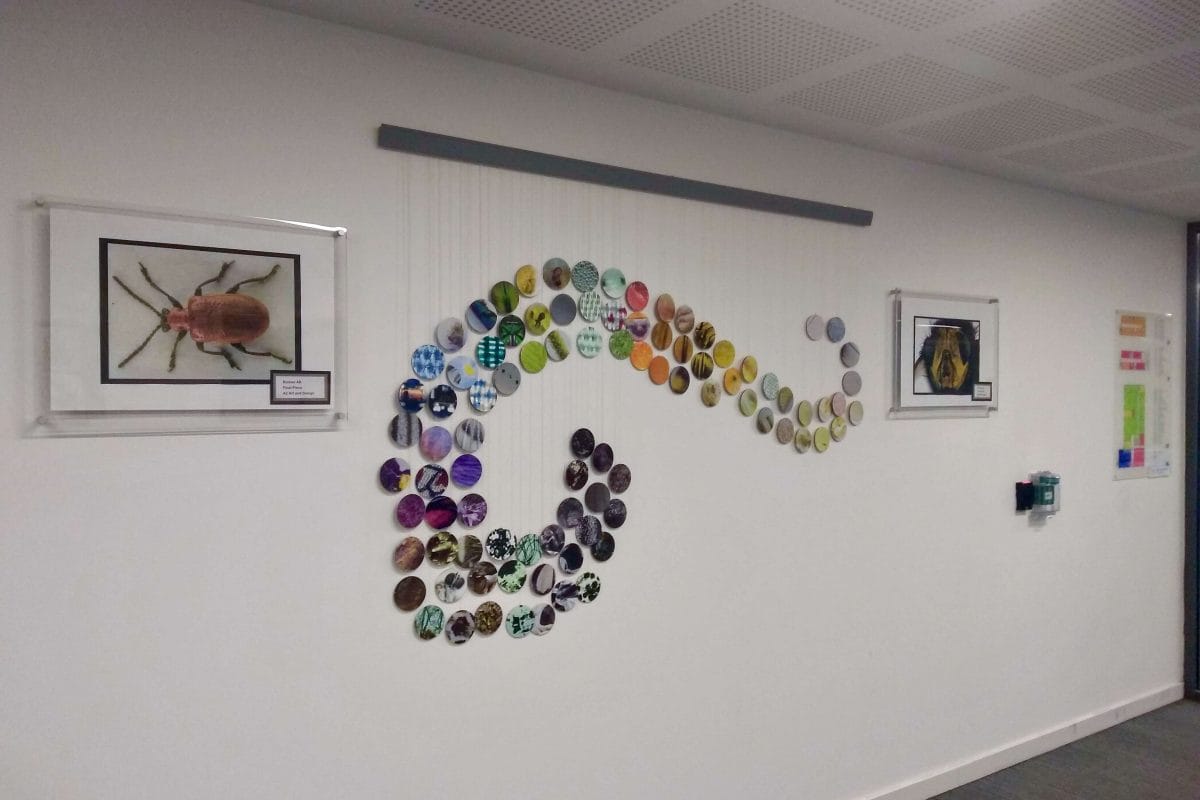
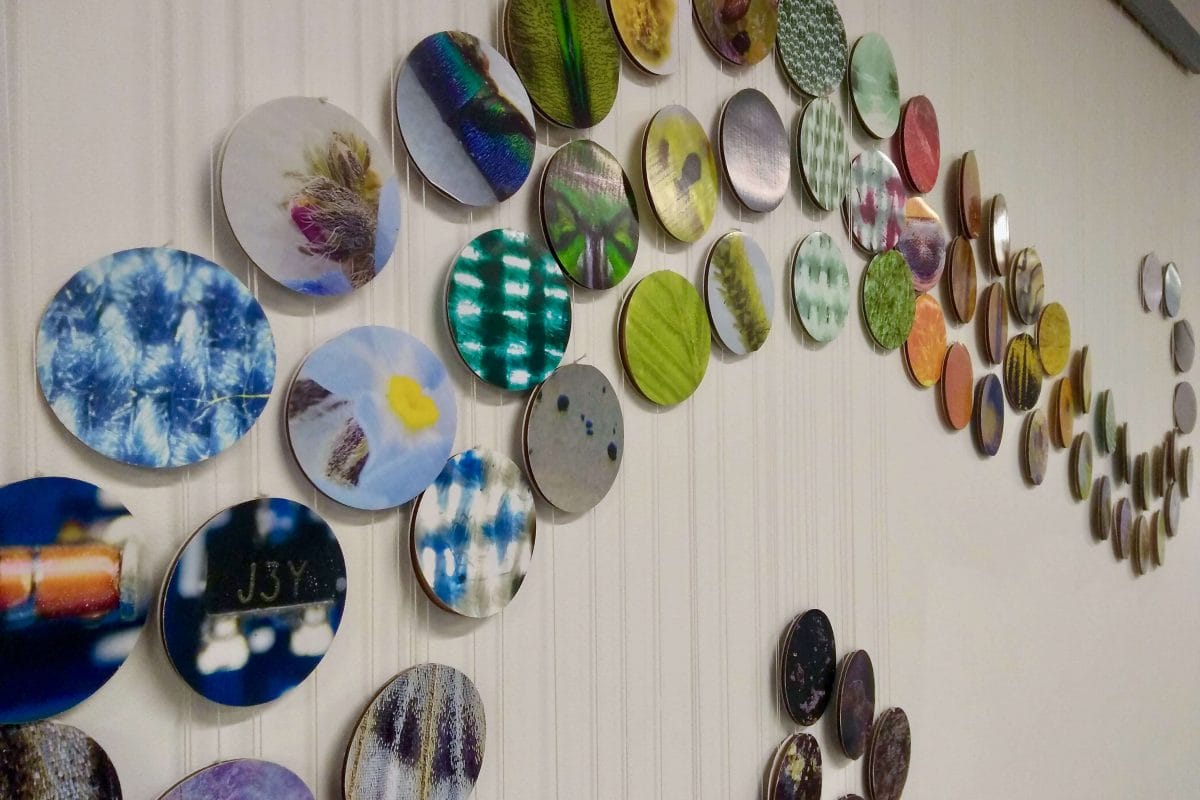
Developing the practice
During the summer between my AS and A Level’s, I came across an article by a photographer named Levon Biss. He was more known for his commercial sports photography, but his personal interest was super macro. He had an exhibition, at Oxford University Museum of Natural History, of huge, printed insects. This inspired me to follow a similar path, as during my experimentation I had found that insects have a huge amount of detail that you don’t tend to see with your own eyes.
I wrote to him about my school project and what I wanted to achieve. He gave me some advice as to what equipment I needed. He said that he uses strobe photography lights, microscope lenses and a stacking rail. All this equipment was super expensive and well out of my reach and budget. After further communication with him I concluded that the most important piece of equipment, and the one that I needed to get to achieve what I was after, was the stacking rail.
I had access to the school workshops and was familiar with building equipment for my camera, previously I had built motorized platforms to add movement to time lapse films, I therefore felt capable of making a stacking rail. After many attempts, failures and limited success I ended up buying one with parental support.
Horniman’s insects
I contacted the Horniman Museum and Gardens in the hope of being allowed to go in and photograph some of their insects. I met the Principal Keeper of Natural Sciences, Jo Hatton, and she kindly gave me some tiny locally sourced specimens to experiment with, from a disposable non-registered collection.
I worked on this for the rest of the year in a home studio space in my bedroom. On one evening, I had an opportunity to use a projector in a gallery to project some of the images to get a sense of their quality.
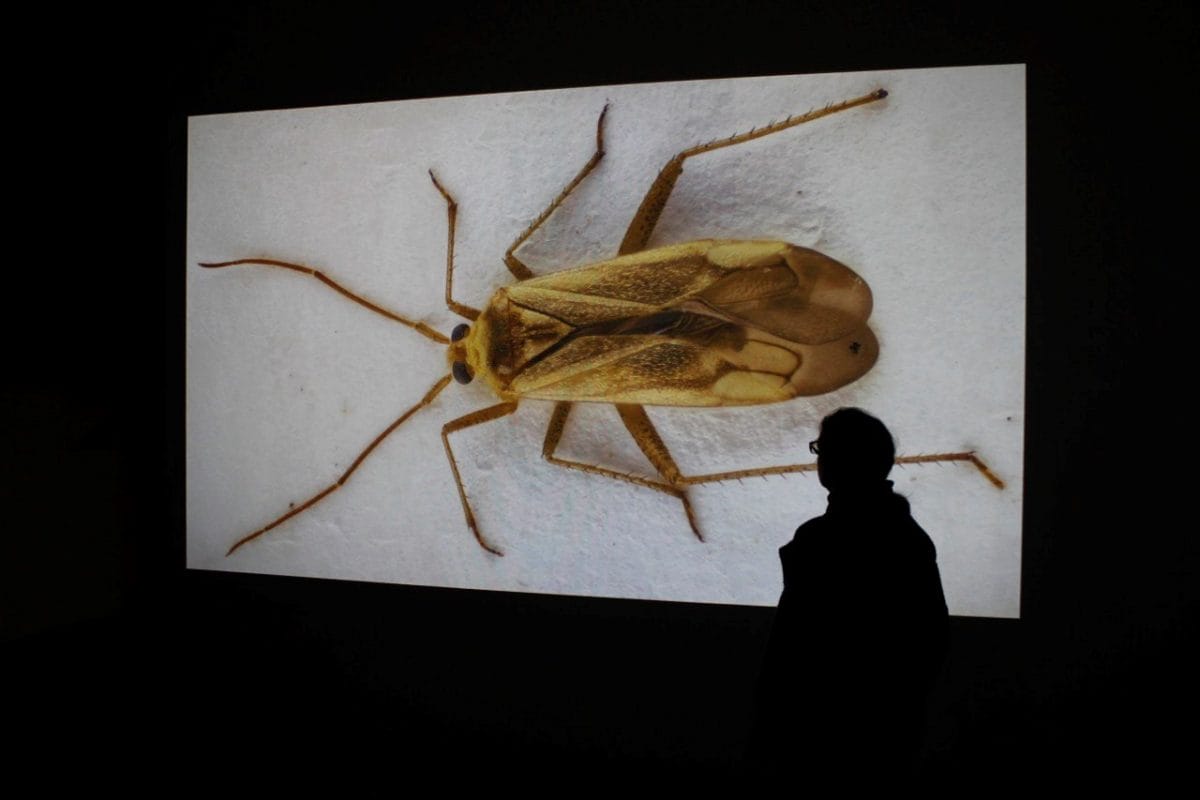
My A-level photography went well. I got an A but I realise now that the images I produced were very much at the experimental stage, and not perfect. Each photograph took months to achieve, and I wasn’t at the stage where I had the skills to meticulously prepare the insects prior to photographing. They were, as they came, with tiny dust and dirt particles on, which was greatly amplified due to the high level of detail in these images.
Developing the skills
I applied but didn’t accept my place at Camberwell College of Art as I was so specific in my intentions with photography. I am neurodiverse, and the college system didn’t seem to suit my needs, I decided to carry on at home.
I was taken on at school to support the A level photography as by then I had learned so much on my own. After a few years of working, I successfully applied for the Arts Council, ‘Developing Your Creative Practice’ (DYCP), grant.
I specifically wanted a mentor to support me in the project, but after much research, I couldn’t find anyone specialist enough, and those I did find were too busy at that time. I was again learning alone.
By now I had a better camera, and I was able to buy lights and other equipment to better improve the results.
Jo gave me more specimens that were smaller and better for me to work with. They came from the donation of Richard (bugman) Jones. I learned how to care and clean them properly before photographing them.
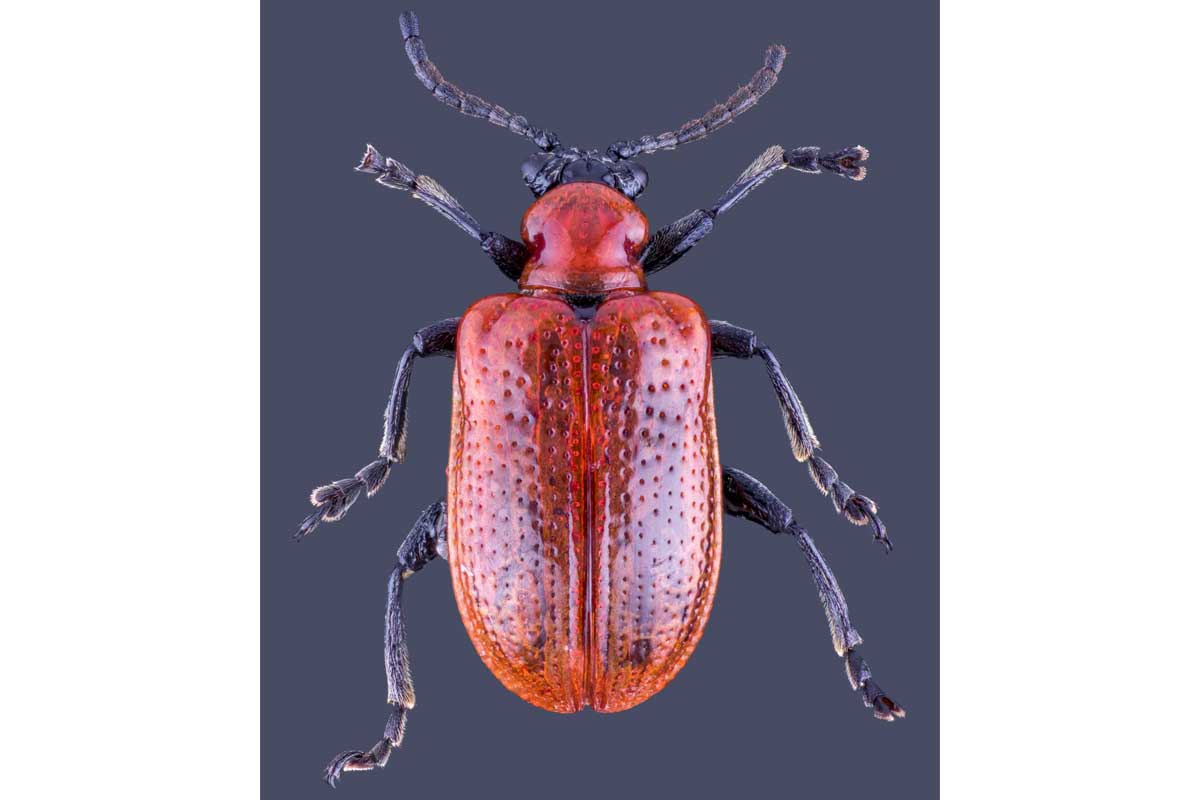
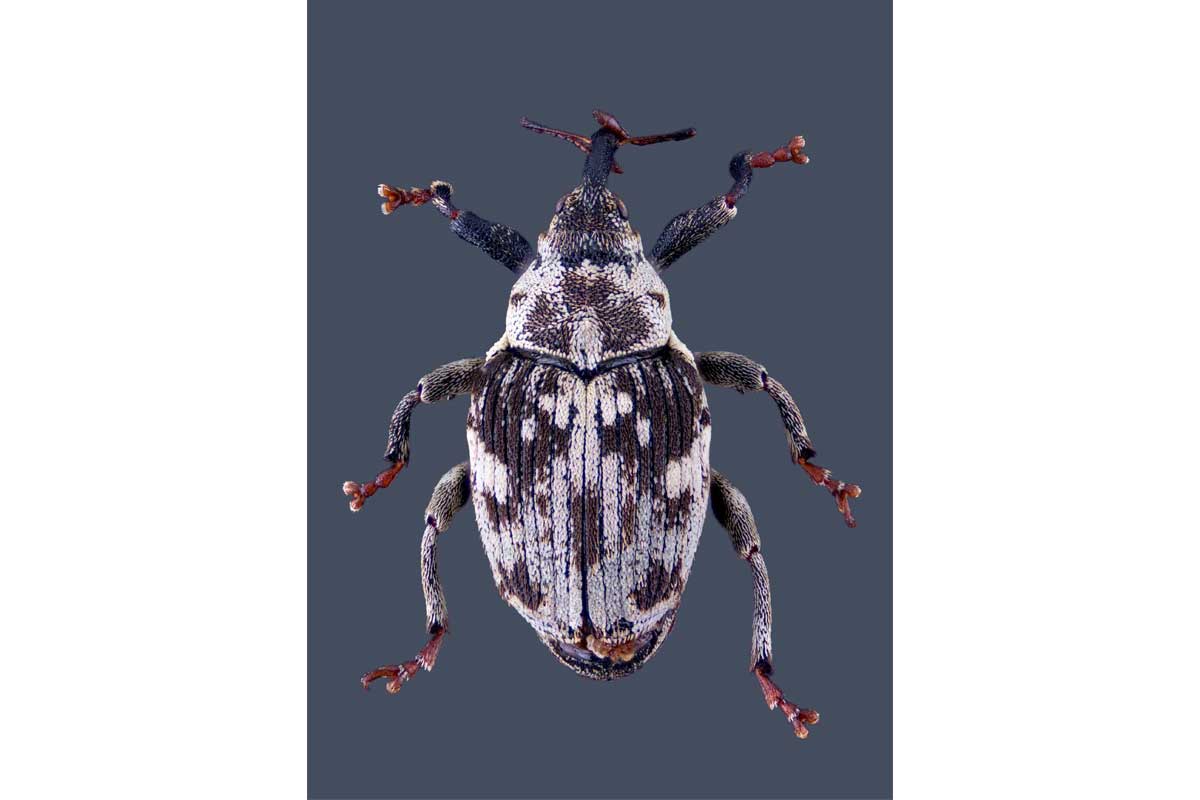
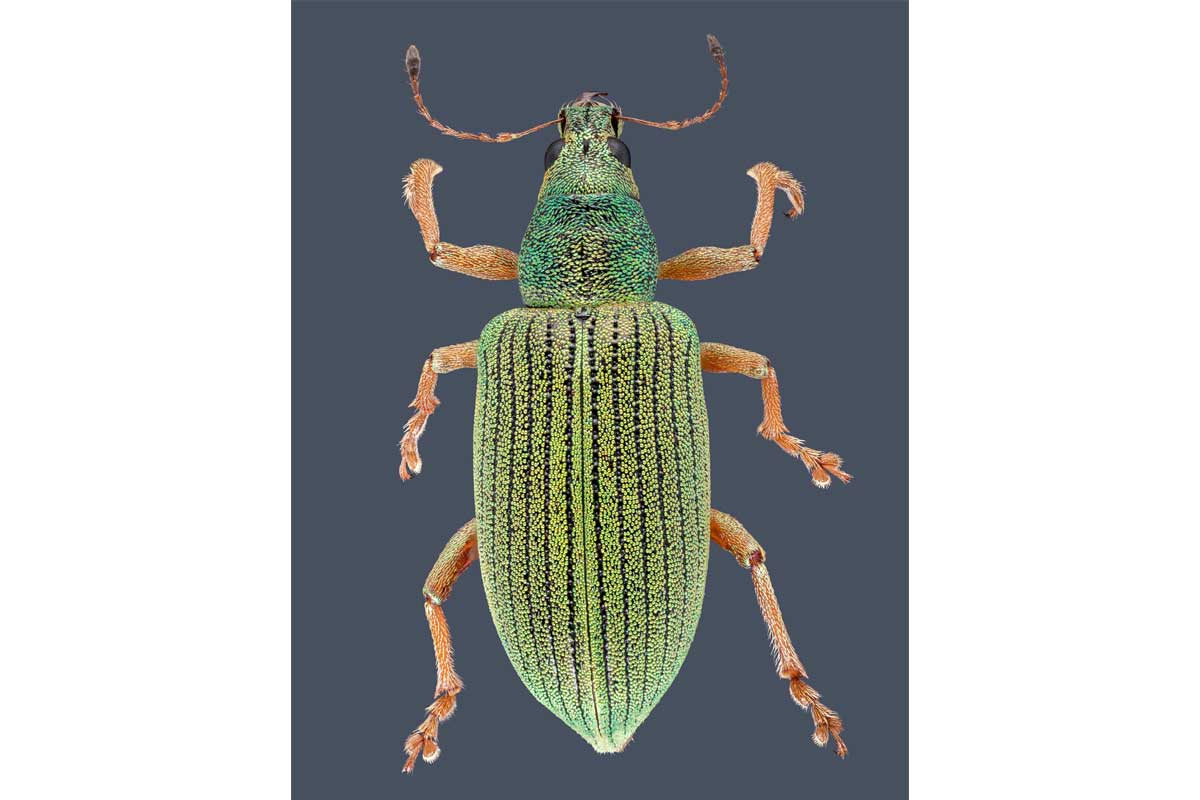
During this time, I became extremely critical of the work, so it has taken years to get a portfolio together. Each photograph I’ve done is made up of thousands of images stacked together to create the final photograph.
The photos now
At the beginning of 2023, I exhibited work at the staff exhibition at Bonhams Auction House Bond Street, London. I was delighted when a super macro print sold at auction for over twice the asking price, my first sale. I also sold a wall mounted paper sculpture, which also relates to the natural world. This new body of work I have been producing is greatly inspired by the detail revealed by super macro photography.
The super macro insect images will print on a larger scale now that I have perfected the technique. I taped together A3 prints as I wanted to see what my images looked like printed on a much larger scale. I put together two large, joined images with some smaller prints produced at home. These are currently on show in Sainsbury’s window, London Road, Forest Hill conveniently just down the hill from the Horniman Museum, where I got them from.
My ambition is to have an exhibition of professionally printed work.


